Traditional Ludlow mill is moving with times - with pictures
The carefully managed flow of water runs beneath Dinham Mill, controlled by a handle inside the wheelhouse. The waterwheel, which looks quite rapid from the outside, seems much gentler at close proximity.
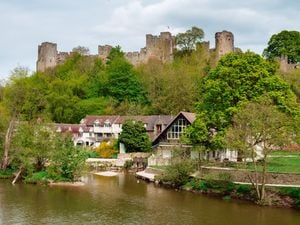
"I think it's really good, there is a great deal of interest in it," says Josh Crouch, who runs a cafe based in the building. "And it keeps the electricity bill down."
This weekend marks National Mills Weekend, when watermills and windmills across the UK open their doors to the public to display both their industrial heritage, and their role in the 21st century.
And nobody can accuse the Dinham Mill of failing to move with the times. Back in the 1300s, the site used water power to grind wheat, providing the bakers in the town with a ready supply of flour. Some 500 years later it was used to power a brass foundry established by Chaplin Hodges in 1827.
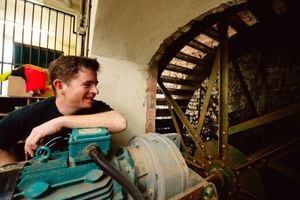
At the turn of the 20th century, the same mill building housed the turbine of the new Ludlow Electric Light Company. The arrival of coal, and later gas-fuelled power stations largely rendered the watermill redundant, and the building spent the second half of the 20th century being used as the changing rooms for a public swimming pool. But now Dinham Mill has, like its huge turbine, come full circle, and is now once more being used to provide electricity.
A new waterwheel, installed in 2009, turns a generator at the site, feeding electricity into the National Grid, while a digital display shows visitors how much power is being produced.
"It is something we do mainly for an educational and historic purpose, although it produces around three quarters of the electricity needed to power the mill building," says Keith Thomsen, who will be on hand to explain the set up to visitors over the weekend.
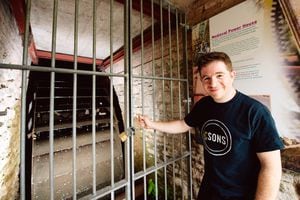
National Mills Weekend has been running since 1984, but it was not until 2006 that the county was fully on board, when Alan Stoyel began organising events in the county. This weekend, there will be six mills open to the public in Shropshire, as well as several in the neighbouring counties of Powys and Herefordshire. This year's event celebrates the role watermills – and windmills – play in supporting our natural environment.
Alison McClary, of the Society for the Protection of Ancient Buildings which organises the event, says: "Owing to their setting, many mills are havens for wildlife.
"Watermills by ponds, rivers and streams, windmills set apart to catch the gusts and gales to turn their sails. Using natural power they do not pollute or blight the environment."
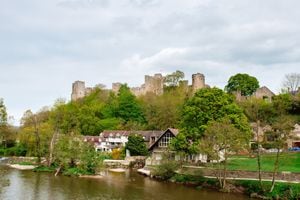
This is something not lost on Mr Thomsen, who points out that the digital display not only records how much power the watermill produces, but also how it has reduced the carbon footprint in the nine years since it was restored.
Mr Thomsen, an 86-year-old retired architect, says that had it not been for the efforts of the Millennium Green Trust, the mill could have been lost altogether. He says following the closure of the swimming pool, on what is now the riverside green, there were plans to build six houses on the site, which would have cut the river off from the general public.
"As you can imagine, there would have been uproar," he says as he looks out from the mill.
Mr Thomsen says by the time the pool closed, the building had fallen into a state of disrepair, and the site had become something of an eyesore. In fact, at first glance, not much of the original building was visible, having been obscured by an unsightly prefabricated roof.
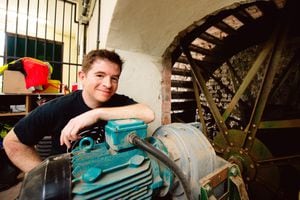
"Originally it was an open-air pool, but they later put a roof over it," he says.
Today, the 14th century stonework of the original mill is visible once more, and blends in beautifully with the Dinham Bridge across the River Teme. The top half of the building, where the grain store once was, has been sympathetically rebuilt, and is now home to the offices of a company which develops electric cars, while the section of the building overlooking the river is now the Mill on the Green Cafe, run by Mr Crouch.
A new waterwheel and generator was built by Ludlow-based Border Engineering, but the current – or mill race as it is correctly known – is still controlled by the historic weir that would have powered the iron foundry at the height of the Industrial Revolution.
"The wheel has to turn at 11 revolutions per minute," says Mr Thomsen.
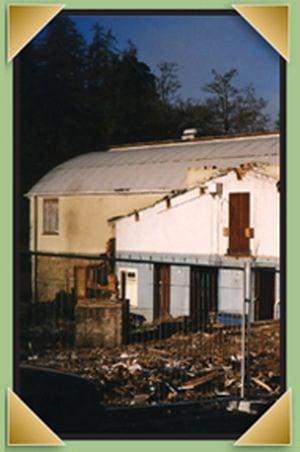
"There's a gearbox inside, so that if the wheel spins at 11rpm, the generator turns at 1,500 to 1,600rpm.
"If it went faster than that, it would burn out the generator, so there is a failsafe device that shuts it down when that happens."
To get the wheel turning at the correct speed, a set of impressive-looking iron sluice gates act as a dam to create the required water pressure.
"You need to have a drop of 90cm to get the water coming through at 500 litres per second," says Mr Thomsen.
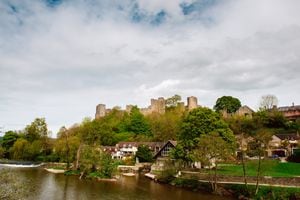
Few would argue that the Millennium Green Trust has done a wonderful job, not only in saving an important historic building, but also in creating a wonderful place for people to while away those sunny days, as the recent bank holiday has shown.
But Mr Thomsen is also mindful that people should not view it through the rose-tinted lenses that one is sometimes tempted to see the old market towns of Shropshire. He says one should never forget the county's role in the Industrial Revolution, and it is important to remember the heavy, noisy, and sometimes dirty industries which make places like Ludlow what they are today.
"People have this perception of Ludlow as this pleasant, picturesque little town, but it's also important to remember that this was an industrial area, and the Hodge's Forge was part of that," he says.
"It is part of the heritage of this area."
*Dinham Mill will be open from 10am until 4pm on Saturday and Sunday. Other Shropshire mills taking part in the event include Wrickton Mill, at Neenton, which will be open Saturday 11am to 4pm, Charlcotte Iron Furnace, also Neenton, which will also be open Saturday 11am to 4pm. Rockhill Mill at Greete, near Ludlow, will be open 10am to 4pm Sunday, while the former corn mill at Clun Youth Hostel will be open from 2pm to 5pm Sunday. Daniels Mill in Bridgnorth is open 11am to 4pm both Saturday and Sunday.





